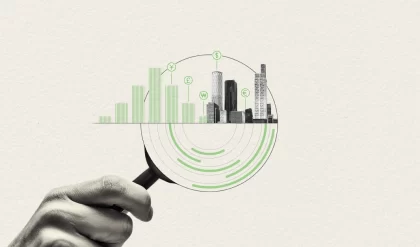Growing adoption of the new generation of technologies such as smart automation and artificial intelligence (AI) has prompted contrasting views of their effect on society. On the one hand, technology seems to have spread everywhere, bringing with it some key impetus to economic growth (Oliner and Sichel 2000). On the other hand, technology may induce rising income and wealth inequality (Kharlamova et al. 2018, Jaumotte and Osorio 2015). The new wave of technology specifically embedded in AI is already creating other fears such as that of technological unemployment driven by large-scale automation of higher cognitive tasks (Acemoglu and Restrepo 2019). Such fears may or may be not justified, but, for the ordinary citizen, they are real – and are provoking mistrust in institutions and rising populist sentiment (Gardels and Bergrruen 2019).
In previous work, we had taken a supply-side view to analyse technology’s potential to lift productivity growth – the set of AI technologies could contribute significant economic growth, possibly even larger than previous technology cycles (Bughin and Hazan 2017). To broaden out this picture, we have updated our research by taking a demand view, through the lens of the citizen welfare view of the impact of technology (Bughin et al. 2019). In an expected utility framework, and incorporating the risk aversion of citizens, welfare is not only derived from income as a result of economic activity, but also from other determinants of wellbeing such as security and the quality of jobs, health, and longevity, or increased leisure (Jones and Klenow 2016, OECD’s Better Life Index). In this framework, technology diffusion can deplete some components of welfare through increased income equality or increased risk of unemployment, just as the average citizen fears.
Measuring welfare: An extension of the Jones and Klenow expected utility framework
In order to estimate the effect of technology on welfare, we used as a starting point the Jones and Klenow measure of welfare based on the expected utility of consumption and leisure for a representative citizen, up to his or her final life years. We then extended the framework to account for additional effects. In particular, we focused on six dimensions of welfare dynamics induced by the diffusion of technologies. They are: 1) income growth linked to technology diffusion, 2) the inequality of income arising from complementary-substitution polarisation of the workforce with technologies, 3) the risk of unemployment (i.e. forced leisure) arising from mostly technological automation and labour market frictions, 4) leisure deployment, especially linked to home automation, 5) improvement or pressure on health and longevity via new technological progress, and finally 6) the evolution of consumption relative to income as result of a technological shift in economy.
Two key insights
In general, the Jones and Klenow methodology suggests that developed countries have had welfare growth beyond pure GDP growth, as a result of the long-term trend of labour productivity growth passed through into more leisure time, and mostly because of health innovations that continue to boost life expectancy. In fact, the increase in lifespan has had different roots over time. These range from better chances of surviving birth in the early 1900s to an increase in longevity at the age of 50-60, as a result of the progress in combating high mortality ailments like cancer and cardiovascular disease. Today, all age groups can expect to live longer and, in particular, it may be possible to make later life healthier and still productive (Jayachandran et al. 2010). The importance of tech innovations for health has also been documented by a large series of studies by Lichtenberg (2015). Income inequality and unemployment risk have played some role, too, with some pressure on welfare. While the US has fared better than Europe in terms of productivity growth, European welfare growth in the past decades has been faster than in the US, given stalling leisure time and a secular increase in income inequality there (Bannister and Mourmouras 2017).
In the case of technologies, past and new such as AI, our research yields two important insights. The first is that the impact of technology on welfare in the combined population of the US and Europe has been in the range of 1% growth a year – 0.6% comes through economic activity and about 0.4% of extra effect from non-GDP welfare elements (Figure 1). This also means that technology contributed roughly one-third of the total welfare growth in the US and Europe, a non-trivial figure. Technology’s contribution to welfare has weakened in recent years, declining from 1.1% to 0.8%, in the aftermath of the Global Crisis, but has remained solid.
Figure 1 Tech contribution has been wider and further beyond GDP than thought
Annual average welfare growth per capita, EU28 and US, CAGR %

The second insight comes from a simulation we conducted of the impact of technology in the coming years. For this, we leveraged our work on how AI might diffuse in the economy and its impact on different economic groups. We extended the model to ‘beyond GDP’ channels in order to derive the impact of technology on welfare.
We find in particular that for Europe and the US together, welfare growth may be in the same ball-park, at 1.1% a year, as it was in the past 40 years. But this could be bigger, between 1.5% and 2.0% a year, if economies are faster in managing the transition to an AI society and focusing on human-centred AI innovations, limiting cost reduction and labour substitution, and focusing more on extending products and a healthy lifetime. We call this the ‘tech for better lives’ scenario. Conversely, the welfare benefits could be reduced if the focus on health is lower, large frictions prevail in the adoption and diffusion of technology, and the dominant business model at play is one of automation efficiency, with large organisational stress for workers (a point also noted by Acemoglu and Restrepo 2019). This scenario is a low growth, low welfare scenario. Not only does it fail to sustain the welfare growth of the past, but it can also be lower than the recent years of adjusting to the 2008 crisis.
Figure 2 Only the ‘tech for better lives’ scenario accelerates GDP and beyond GDP vs the past
Annual average welfare growth per capita, EU-28 and US, CAGR %

Note: GDP and non-GDP CAGRs as not additive and their sum may not equal to the CAGR of total welfare
A few important points are in order, to make sense of these estimates. On the positive side, we anticipate the potential of productivity growth from rolling out the new frontier technologies. Likewise, there is growing evidence that AI may become a critical set of technologies to improve health and longevity (Carlsson et al. 2017). The market is betting on it – funding for healthcare AI startups is the largest among all industries to date. Companies such as Insilico Medicine are already using AI to optimise and accelerate the funnel of discovery of effective drugs, with some success. Watson, among others, has almost doubled the discovery rate of lung cancer versus human doctors (Daimandis 2019). Thus, a focus on how AI can play on health is important. For now, the state of AI suggests that Europe in particular lags behind, with major platforms such as Tencent in China and Apple and Google’s DeepMind in the US vying for leadership.
On the negative side, our recent work on the resilience of the social contract suggests that technology may be the single largest contributor to the increase in inequality of income. This arises because companies adopt technologies at a different pace and have differing degrees of success with their AI transformation. At the same time, the automation of workers’ activities in favour of capital drives down the labour share of income . Another critical issue is (the risk of) unemployment arising from automation. A small amount of friction can be enough to trigger a sharp rise in unemployment. We thus infer that regions and countries with large frictions may create a multiplicative risk of unemployment – that is, they will take a long time to retrain workers and be hampered by the mismatch of skills across industries or poor geographical mobility (Towers Watson 2010).
A question of balance and priorities
Taking all those figures together, we can first conclude that tech is neither intrinsically good nor bad. It is how technologies are deployed and how the transition is crafted that conditions the welfare dynamics of societies. Second, taking only a productivity view may be too restrictive – for risk-averse citizens, the risk of inequality, unemployment, and stress are real issues. Hedging those risks over time is too long for citizens to bear. Third, a proactive, well-crafted AI strategy may accelerate welfare growth linked to technology. The pay-off may be large. In other words, the focus of research and management and government actions should not be to blame technology, but rather to prepare for the best socio-politics of change.






Comments are closed.